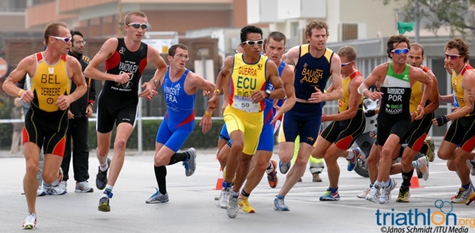Mitochondrial Theory of Aging and Other Aging Theories |
|
Theories have developed regarding the key role Mitochondria play in the aging process which have sparked new research regarding how Mitochondria may be influenced by lifestyle and science to enhance quality longevity and fight disease.
What are Mitochondria
Mitochondria are organelles meaning they are separately enclosed by their own membrane within a cell. The number of mitochondria in a cell is determined by the cell's specific function and energy needs. Cells such as heart muscle cells have many mitochondria. Heart cells, for example, have thousands of Mitochondria, while skin cells have only one Mitochondria each. Mitochondria are composed primarily of proteins.
Converting Nutrients from Food to Energy
Lets see how food turns into ATP energy packets and water. The food we eat must first be converted to basic chemicals that the cell can use. Some of the best energy supplying foods like Whole Grain breads, pasta and Milk contain sugars or carbohydrates. The carbohydrates and sugars are broken down by enzymes that split them into the simplest form of sugar which is called glucose. Then, glucose enters the cell by special molecules in the membrane called “glucose transporters”. Once inside the cell, glucose is broken down to make ATP in two pathways. The food molecules are oxidized to carbon dioxide and water in the Mitochondria.
 |
Mitochondria Functions
Mitochondria play several key roles at the cellular level and have the following functions:
- Cellular Power Plant. The food we eat is oxidized to produce high-energy electrons that are converted to stored energy. This energy is stored in high energy phosphate bonds in a molecule called Adenosine Triphosphate, or ATP. Mitochondria generate within a cell most of our body’s Adenosine Triphosphate (ATP) . ATP is used to transport energy within a cell for Metabolism and is the main source of energy storage and energy transport. ATP is considered the ‘molecular unit of currency’ that transfers energy within a cell. The process within a cell of the creation and breakdown of ATP creates energy. ATP is continuously recycled in cells with the human body turning over its own weight in ATP each day. This continual ATP recycling,is consistent with the Physics law of the Law of Conservation of Energy which states that the total amount of energy in an isolated system remains constant. A consequence of this law is that energy cannot be created or destroyed. The only thing that can happen with energy in an isolated system is that it can change for.
- Cellular Aerobic Respiration. In cells, Mitochondria perform aerobic respiration, a process that generates the energy molecule ATP from nutrient molecules using oxygen. This process is critical in that ATP constitutes one of the body's principal usable energy reservoirs. Three key components of aerobic respiration are 1) glycolysis, 2) the Kreb's cycle, and 3) the electron transport chain (ETC). Cell Respiration is the set of the metabolic reactions and processes that take place in cells to convert energy from nutrients into adenosine triphosphate (ATP), and then release waste products. Nutrients commonly used by cells in respiration include glucose, amino acids and fatty acids, and the molecular oxygen (O2). For each glucose molecule, a total of 32 ATP are produced via the electron transport chain, in addition to the 2 from the Kreb's cycle and 2 from glycolysis. This yields a grand total of 36 ATP produced via aerobic respiration. Therefore, from one molecule of glucose, the presence of Mitochondria increase the usable amount of energy from it by 34 ATP, or 1700%, over glycolysis alone.
- Cell Signaling. Cell Signaling is part of a system of communication that governs basic cellular activities and coordinates cell actions. The ability of cells to perceive and correctly respond to their microenvironment is the basis of development, tissue repair, and immunity (biological defenses to avoid infection and disease) as well as normal tissue homeostasis (equilibrium). Errors in cellular information processing are responsible for many diseases. Researchers believe that by understanding cell signaling, diseases may be treated effectively and, theoretically, artificial tissues may be yielded.
- Cellular Differentiation. Cellular Differentiation. is the process by which a less specialized cell becomes a more specialized cell type. A cell that is able to differentiate into many cell types is known as a stem cell. Cell Differentiation is a transition of a cell from one cell type to another and it involves a switch from one pattern of gene expression to another.
- Cell Death. Cell Death is a form of naturally occurring programmed cell death. Programmed Cell Death involves a series of biochemical events that lead to a variety of changes, including changes to the cell membrane, shrinkage, nuclear fragmentation and chromosomal DNA fragmentation.
- Cell Division. Cell Division is a process by which a cell divides into two or more cells. Cell Division is usually a small segment of a larger cell cycle. A primary objective of Cell Division is the maintenance of the original cell's genome. Before division occurs, the genomic information which is stored in chromosomes must be replicated, and the duplicated genome separated cleanly between cells, creating identical sets of chromosomes in the new cells. Worn-out cells are replaced through Cell Division. In some animals, however, cell division eventually halts. In humans cell division occurs on average, after 52 divisions, known as the Hayflick limit which is named after its discoverer Leonard Hayflick. Genomic information is mostly consistent between "generations", however significant research is taking place regarding Gene Expression + Nutrition. Specifically, researchers are finding that nutrition has an impact on how genes are expressed. Furthermore, there is evidence that some chromosomes change can occur within a generation based upon either good nutrition or bad nutrition.
- Calcium Ion Storage. Mitochondria store calcium and have the ability to rapidly to take in and store calcium for rapid release when needed. Calcium plays a key role in contraction of muscle cells, neuron transmission and blood clotting.
Mitochondria and Cell Cycle
Mitochondria play an important role in the cell cycle. In biology the word Senescence means the state or process of aging. Senescense is the phenomenon regarding the cell cycle where cells have a limited ability to divide and organisms have a declining ability to respond to stress. The cell cycle is a process by which a cell splits itself into two distinct cells. The cell cycle is a vital process by which skin and blood cells (and other cells) and some internal organs are renewed. Human cellular Senescence has been attributed to the shortening of telomeres with each cell cycle. Telomeres are repetitive DNA sequences located at the end of chromosomes. When telomeres become too short, the cells die. The length of telomeres is therefore the "molecular clock". Telomere length is maintained in ‘immortal’ cells like stem cells, but not in cells like blood and skin cells. As genes determine a cell’s ability to divide and respond to stress. Some scientists regard aging as a result of genetic programming and not an unavoidable. As such, theoretically, these scientists view aging as not necessarily unavoidable.
Mitochondrial Aging Theory
When Mitochondria are functioning properly, good things happen. Your body runs the way it's supposed to -- your heart beats, your neurons fire, your muscles contract, your eyes see, and your liver, kidneys, and other organs operate as they should.
Unfortunately, at least two factors stand in the way of properly functioning mitochondria. The first is genetic mutation. Mutations may be inherited, or caused by diet and lifestyle, or simply random. And they're associated with a vast array of conditions ranging from neuromuscular ailments to dementia, atherosclerosis, and diabetes. In such cases, the genetically damaged mitochondria fail to process all the nutrients in the cell, leading to an energy crisis within the cell. Without enough power to function, the cell falters...and presto, bad stuff happens.
The second force working against your mitochondria is, simply, time. The great paradox of mitochondria is that even as they're providing energy to your body, they're essentially sowing the seeds of their own destruction. During aerobic respiration, by-products, such as free radicals, leak out. Over time, they harm both the mitochondria and other parts of the cell. The result: damage that looks a lot like aging.
Mitochondria decay with age due to the oxidation of lipids, proteins, RNA, and DNA. Some of this decay can be reversed in aged animals by feeding them the mitochondrial metabolites acetylcarnitine and lipoic acid.. These results suggest a plausible mechanism: with age, increased oxidative damage to proteins and lipid membranes, particularly in mitochondria, causes a deformation of structure of enzymes, with a consequent decrease of enzyme activity as well as substrate binding affinity for their substrates; an increased level of substrate restores the velocity of the reaction and restores mitochondrial function, thus delaying mitochondrial decay and aging.
Given that Mitochondrial DNA exists in the inner matrix and this is in close proximity to the inner membrane where electrons can form unstable compounds, Mitochondria DNA has a relatively high chance of getting damaged by unstable compounds. This damage is hypothesized to play a critical role in the aging process according to the mitochondrial theory of aging.
Lifestyle and Exercise Impact on Aging and Mitochondria
When our lifestyle is optimally focused upon a routine of good nutrition, regular exercise, and we are engaged in challenge and in realizing productive endeavors while maintain a clear mind and positive relationship and we finish each day with get good sleep our Mitochondria become strong with a powerful reserve of energy. With this lifestyle our Metabolism is high and efficient and designed for long living.
Exercise is known to have a major impact on mitochondrial function. Exercise not only increases aerobic capacity significantly, but exercise also causes Mitochondria to pumping out more ATP-boosting enzymes.
Want to burn more fat? Focus on your mitochondria. These microscopic generators turn nutrients, including fat, into fuel for your muscle cells. Swimming is an excellent low impact aerobic sport that helps build Mitochondria. The more intensely you exercise, the more mitochondria you bring online, which means your muscles can work harder and longer, according to Men's Health advisor Alex Koch, Ph.D., an exercise scientist at Truman State University.
Nutrition, diet and Portion Control also play an important role in Mitochondria health and efficiency. It has been proven that significantly reducing an organism's calorie intake lengthens its life. The key is finding the right balance of calorie intake to provide the necessary fuel to maintain a high yet efficient Metabolism. Too much sodium in a diet causes an overactive Sodium-Potassium Pump robbing cells of energy and inefficiently using the energy stored in Mitochondria.
Continued challenge that brings a certain level of stress may increase longevity. This idea has now gathered a large body of supportive evidence showing that repetitive mild stress exposure has anti-aging effect.
Furthermore, researchers have found that healthy older adults show evidence of mitochondrial impairment and muscle weakness, but that this can be partially and sometimes substantially reversed following six months of resistance exercise training
Other Aging Theories
- Telomere Theory. Telomeres (structures at the ends of chromosomes) have experimentally been shown to shorten with each successive cell division. Shortened telomeres activate a mechanism that prevents further cell multiplication. This may be an important mechanism of aging in tissues like bone marrow and the arterial lining where active cell division is necessary.
- Reproductive-Cell Cycle Theory. The idea that aging is regulated by reproductive hormones promoting growth and development early in life in order to achieve reproduction, but later in life drive senescence.
- Wear-and-Tear theory. The very general idea that changes associated with aging are the result of chance damage that accumulates over time.
- Somatic Mutation Theory. The biological theory that aging results from damage to the genetic integrity of the body’s cells.
- Error Accumulation Theory. The idea that aging results from chance events that escape proof reading mechanisms, which gradually damages the genetic code.
- Accumulative-Waste Theory. The biological theory of aging that points to a buildup of cells of waste products that presumably interferes with metabolism.
- Autoimmune Theory. The idea that aging results from an increase in autoantibodies that attack the body's tissues.
- Aging-Clock Theory. The theory that aging results from a preprogrammed sequence, as in a clock, built into the operation of the nervous or endocrine system of the body. In rapidly dividing cells the shortening of the telomeres would provide just such a clock.
- Cross-Linkage Theory. The idea that aging results from accumulation of cross-linked compounds that interfere with normal cell function.
- Free-Radical Theory. The idea that free radicals (unstable and highly reactive organic molecules, also named reactive oxygen species or oxidative stress) create damage that gives rise to aging symptoms. However, Michael Ristow, a German medical researcher has shown that induction of stress can lengthen lifespan in some species. This delay of aging is due to increased formation of free radicals within the Mitochondria causing a secondary induction of increased antioxidant defense capacity.
- Inflammation Theory. The inbuilt mechanism of inflammation and repair holds many keys for tissue renovation and aging.
- Mitohormesis. It has been known since the 1930s that restricting calories while maintaining adequate amounts of other nutrients prevents aging across a broad range of organisms.
- Disengagement Theory. This is the idea that separation of older people from active roles in society can have an aging effect.
- Activity Theory. This theory implies that the more active elderly people are, the more likely they are to be satisfied with life and the higher will be their Metabolism and ambition.
<-- back to top








